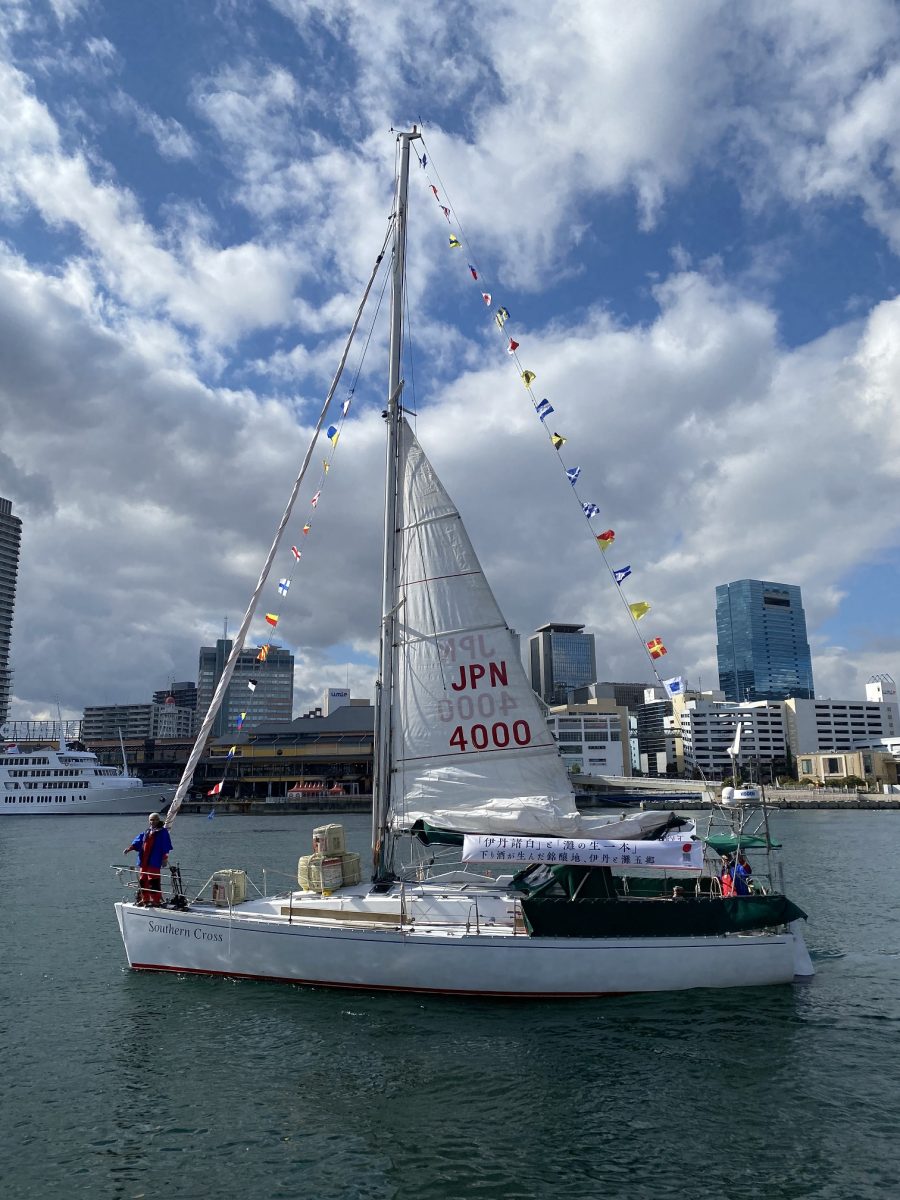On November 23, 2021, there was an event related to Japan Heritage called “The Revival of the Legendary Kudarizake (the sake brewed and transported from Kamigata to Edo)”. It was an event to revive the way that refined sake, which was produced in Kamigata (Kyoto and vicinity where the Emperors resided, including Nishinomiya), was transported to Edo (present-day Tokyo) in the Edo period (1603-1868). In the Edo period, sake was transported by a type of cargo vessel called tarukaisen (a vessel specially designed to transport sake casks). On November 23, 2021, several sake casks were loaded onto a boat at Kobe Port, and safely arrived at Tokyo Port on November 28th, five days after departure. The sake transported to Tokyo in such a traditional way must have tasted delicious! In congratulations for the successful transport of the sake, this post will introduce the cargo vessel, tarukaisen.
In the Edo period (1603-1868), most of the sake produced in kamigata was transported to Edo by tarukaisen and consumed in Edo. The sake was poured into 72L cedar wood casks, each weighing over 80kg when filled. Because the casks were so heavy, it was not possible to transport many casks by land, as the only way to transport cargo by land before the invention of vehicles and trains was by loading it onto horses. Thus, transport via sea route was developed. At first, sake casks were transported with other merchandise such as cotton, oil, vinegar and soy sauce by vessels called higakikaisen. From 1730, vessels specially designed to transport sake casks (tarukaisen) were developed and used.


Now, let’s see how tarukaisen made their voyages in the 17th century. The refined sake brewed at sake breweries in Kamigata were loaded onto tarukaisen by shipping agents in Osaka and Nishinomiya. At that time, the loading capacity of the largest vessel was approximately 3,000 casks, and the vessels departed from Osaka Port with a full load. After passing through the rough waters of Kumano Sea near Kii Peninsula and arriving at Shima Province (present-day Mie Prefecture), the vessel sailed straight to Izu Peninsula (present-day Kanagawa Prefecture). The vessel had to then clear inspection at the guard station in Uraga, Sagami Province (present-day Kanagawa Prefecture) and finally sailed to Shinagawa offing of Edo bay, where the casks were reloaded onto small boats and transported to the sake merchants and wholesalers in Shinkawa (present-day Chuo Ward, Tokyo).
According to the 1864 records, 78 tarukaisen vessels were in service at that time. Those vessels transported sake casks from Kamigata to Edo about 5 times a year so that people in Edo could enjoy the kudarizake (sake from Kamigata). The history of sake brewing in Kamigata cannot be told without the development of sea transport by tarukaisen. We will share more about tarukasien in detail in the near future.
Best wishes for the New Year! Please look forward to the new article that we will post on New Year’s Day, 2022.






より(縮小)-1.jpg)






The skilled sake brewing craftsmen came to Nishinomiya from Tanba Province!